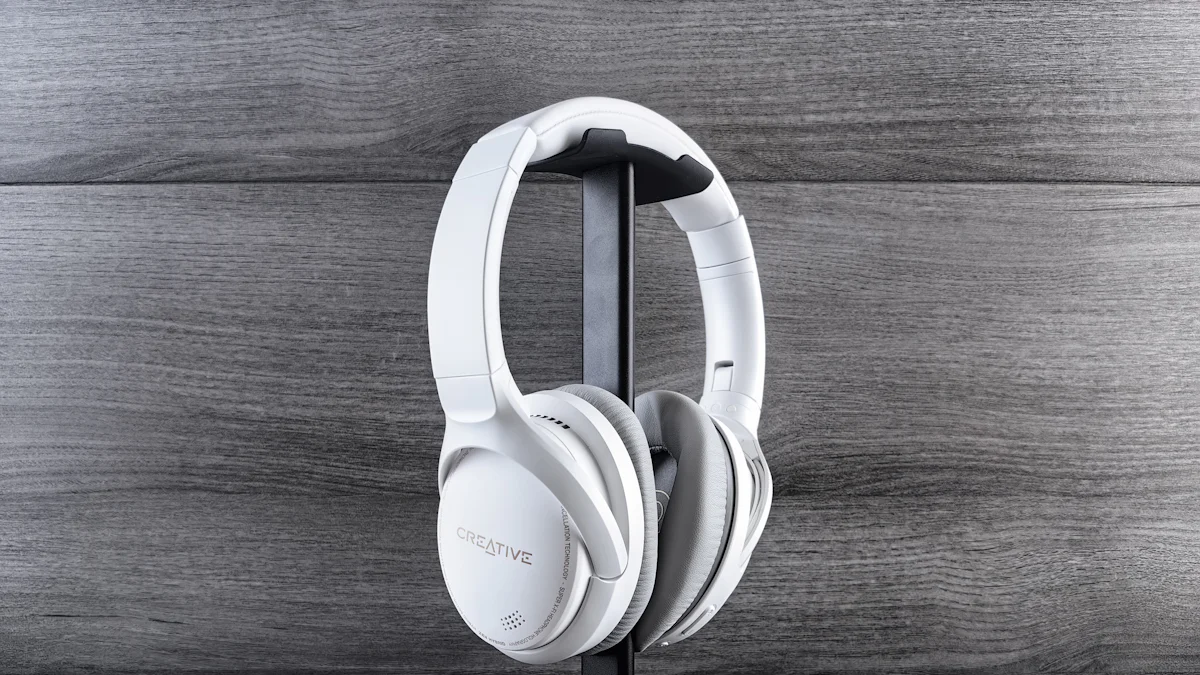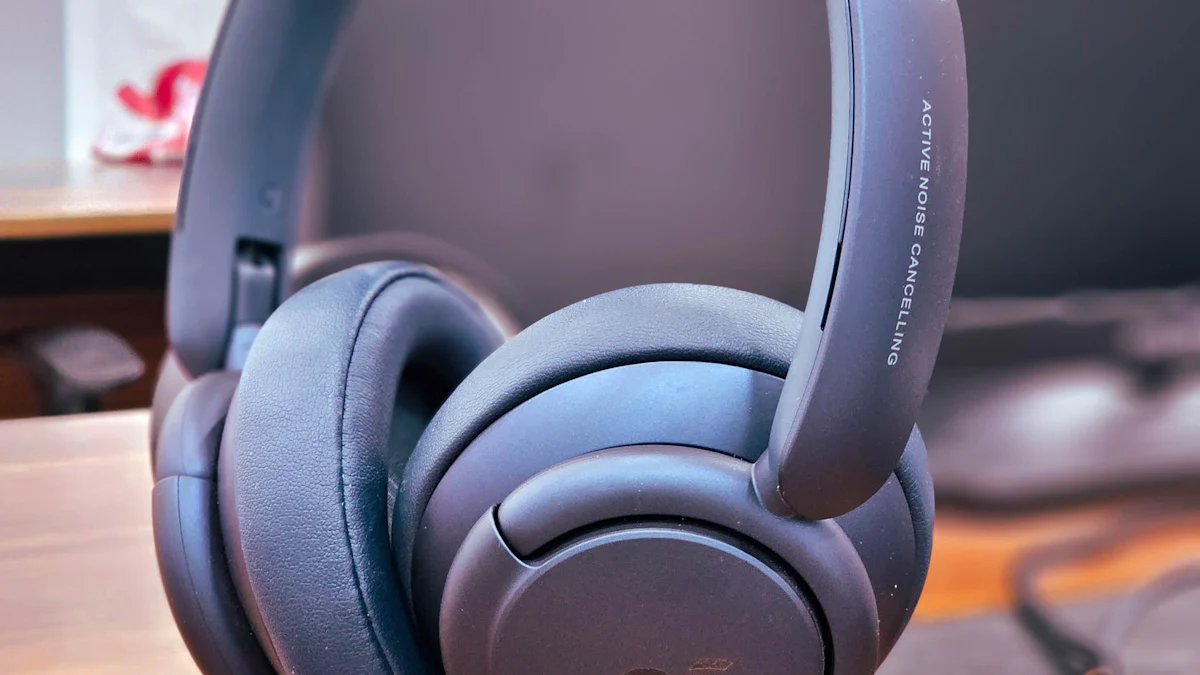Top 3 Ways Noise-Canceling Headphones Enhance Communication

Noise-canceling headphones revolutionize communication by minimizing ambient sounds. These devices play a pivotal role in modern communication, especially in open-plan offices and shared workspaces. A study highlighted in the Harvard Business Review showed a 46% increase in task completion rates when reducing ambient noise. Clear communication becomes crucial in various environments, from professional settings to educational spaces. For instance, individuals on the autism spectrum experience enhanced focus and learning with these headphones. The technology not only improves concentration but also decreases stress for college students.
How Noise Cancellation Works

Basics of Noise Cancellation
Noise Cancellation Work involves two primary techniques: Active Noise Control (ANC) and passive noise reduction. ANC technology utilizes microphones and speakers to generate sound waves that neutralize unwanted ambient sounds. This process, known as Active Noise, effectively reduces low-frequency noises like the hum of an engine or chatter in a busy office. Active Noise Cancellation Technology stands out for its ability to create a quieter environment, making it ideal for individuals seeking focus.
In contrast, passive noise reduction relies on physical barriers to block sound. The design of cancelling headphones plays a crucial role here. Materials such as dense foam or tight-fitting ear cups help reduce high-frequency noises. While both methods contribute to a quieter listening experience, active noise cancellation technology remains superior in handling persistent background noise.
Evolution of Noise-Canceling Headphones
The journey of noise-cancelling headphones began with their invention for airplane pilots on long flights. The need arose from the constant drone of engines affecting communication and concentration during extended periods in the cockpit. The AIR FORCE RESEARCH initially explored this concept, leading to significant advancements.
Dr. Amar Bose, founder of the renowned audio company, played a pivotal role in transforming these devices into consumer-friendly products. The first commercial success came with the introduction of the Bose Aviation headset, which utilized advanced ANC technology to provide clear audio experiences even at high altitudes.
Over time, technological advancements have miniaturized and refined these systems for everyday use. Modern ANC headphones turn into essential tools for professionals and students alike, offering versatility across various environments. From reducing distractions during work meetings to enhancing music enjoyment during commutes, these devices have become indispensable in modern life.
Benefits of Noise-Canceling Headphones

Enhanced Communication Clarity
Noise-canceling headphones invented to enhance communication clarity have transformed modern life. The noise-cancelling feature significantly reduces unwanted noise, allowing individuals to focus on conversations without distractions. This technology proves invaluable in environments where background sounds can disrupt communication.
Reduction of Background Noise
The reduction of background noise stands as a primary benefit of these devices. By employing advanced noise cancellation technology, these headphones effectively block out ambient sounds, creating an ideal auditory environment for clear communication. Individuals no longer need to strain to hear over the din of bustling offices or crowded public spaces.
Improved Focus and Concentration
Improved focus and concentration result from the use of these headphones. In educational settings, students experience enhanced learning outcomes due to reduced sensory overload. Case studies show that individuals on the autism spectrum benefit greatly from this technology, with improved participation and attention spans in classrooms.
Versatility in Different Settings
The versatility of noise-canceling headphones extends their utility across various settings. These devices cater to both professional environments and personal entertainment needs, making them indispensable tools for many users.
Use in Professional Environments
In professional environments, noise-cancelling headphones hoping to improve productivity by minimizing distractions have become essential. Employees enjoy increased concentration during work meetings or while completing tasks in open-plan offices. The ability to maintain focus amidst potential disturbances enhances overall work performance.
Personal Use and Entertainment
For personal use and entertainment, these headphones offer a superior audio experience by eliminating external noise interference. Commuters appreciate the ability to enjoy music or podcasts without raising the volume excessively. The integration with smart devices further augments their functionality, providing seamless connectivity for users on the go.
The History of Noise Cancellation highlights its evolution from aviation headsets to consumer products designed for everyday use. Notable figures like Dr. Amar Bose contributed significantly to this journey, transforming initial concepts into practical solutions for diverse applications.
Future of Noise-Canceling Technology
Innovations on the Horizon
Noise-canceling technology continues to evolve, offering exciting innovations that promise to enhance user experiences. Active noise cancellation (ANC) now integrates with smart devices, providing seamless connectivity and control. Users can adjust settings through mobile apps, tailoring the silencing feature to personal preferences. This integration transforms noise-canceling headphones into a survival tool for modern life, allowing users to manage their auditory environment with ease.
The next generation of advanced algorithms and multiple microphones. These advancements detect and cancel ambient sound more effectively than ever before. The result is a more immersive audio experience that enhances concentration in various settings, from bustling offices to crowded public spaces. This technology not only improves communication clarity but also offers potential hearing protection by reducing sound pressure levels.
Integration with Smart Devices
Smart device integration represents a significant leap forward for noise-canceling headphones. Users can now enjoy enhanced control over their listening experience through intuitive interfaces on smartphones and tablets. This feature allows for real-time adjustments, ensuring optimal performance in any environment. The ability to customize the silencing feature according to specific needs makes these headphones an indispensable tool for modern life.
Market Growth and Trends
The market for noise-canceling headphones shows remarkable growth potential. Analysts project substantial expansion as consumers increasingly recognize the benefits of this technology in diverse applications. From professional environments like open-plan offices to personal use during commutes or leisure activities, demand continues to rise. Manufacturers respond by developing innovative products that cater to evolving consumer preferences.
Noise-canceling headphones offer significant benefits, enhancing communication clarity and focus. College students find these devices beneficial for increasing productivity and concentration while avoiding adverse health effects from noise exposure. Individuals with autism experience reduced sensory overload, making these headphones a valuable tool. The impact on communication is profound, as users can engage without distractions. In bustling cities like London, these headphones become a vital part of daily routines, helping manage ambient noise effectively. As technology advances, the integration of smart features promises even greater utility, making noise-canceling headphones an essential part of daily life.
See Also
Distinguishing Google Meet from Zoom: 3 Key Features for Video Calls
Easy Guide: Adding Free Echo Effects to Online Audio
Deciding Between Zoom and Google Meet: 4 Essential Features
Comparing Jabra PanaCast 50 and Coolpo AI Huddle PANA: The Best Camera
Improving Virtual Meetings with 4K Auto-Tracking Webcam Technology
